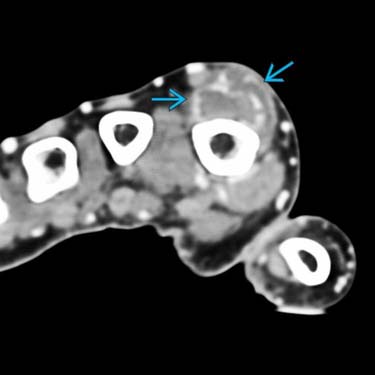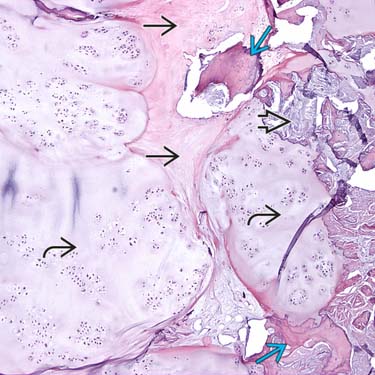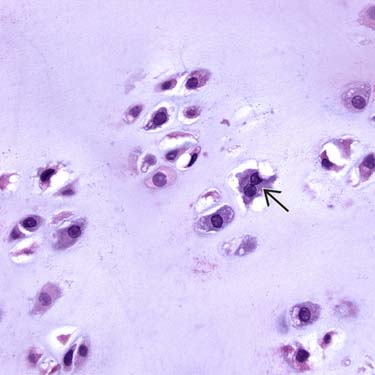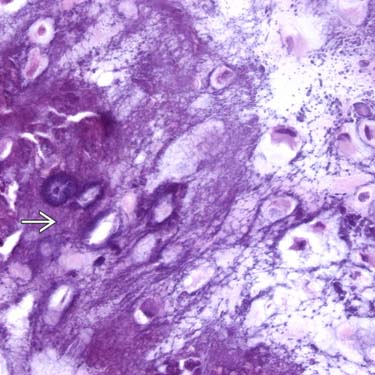
Soft tissue chondroma typically occurs in the digits of the hands and feet. It presents as a painless, well-demarcated mineralized mass, as demonstrated in this CT of a dorsal index finger lesion. Note the peripheral distribution of mineralization
 .
.
Soft tissue chondroma typically has a lobular architecture with islands of hyaline cartilage
 separated by fibrous bands
separated by fibrous bands  . Matrix calcification
. Matrix calcification  and ossification
and ossification  are common.
are common.
High-power micrograph illustrates typical cytological features of soft tissue chondroma. The chondrocytes are often arranged in clusters, situated in lacunar spaces within a pale blue hyaline matrix, and have uniform round nuclei and abundant eosinophilic cytoplasm. Rare binucleated cells can be seen
 . Mitoses are rare.
. Mitoses are rare.
Areas of very dense calcification are common, illustrated by heavy basophilic staining
 of the cartilage matrix.
of the cartilage matrix.MICROSCOPIC
Histologic Features
• Variable amounts of calcification




Stay updated, free articles. Join our Telegram channel

Full access? Get Clinical Tree





















